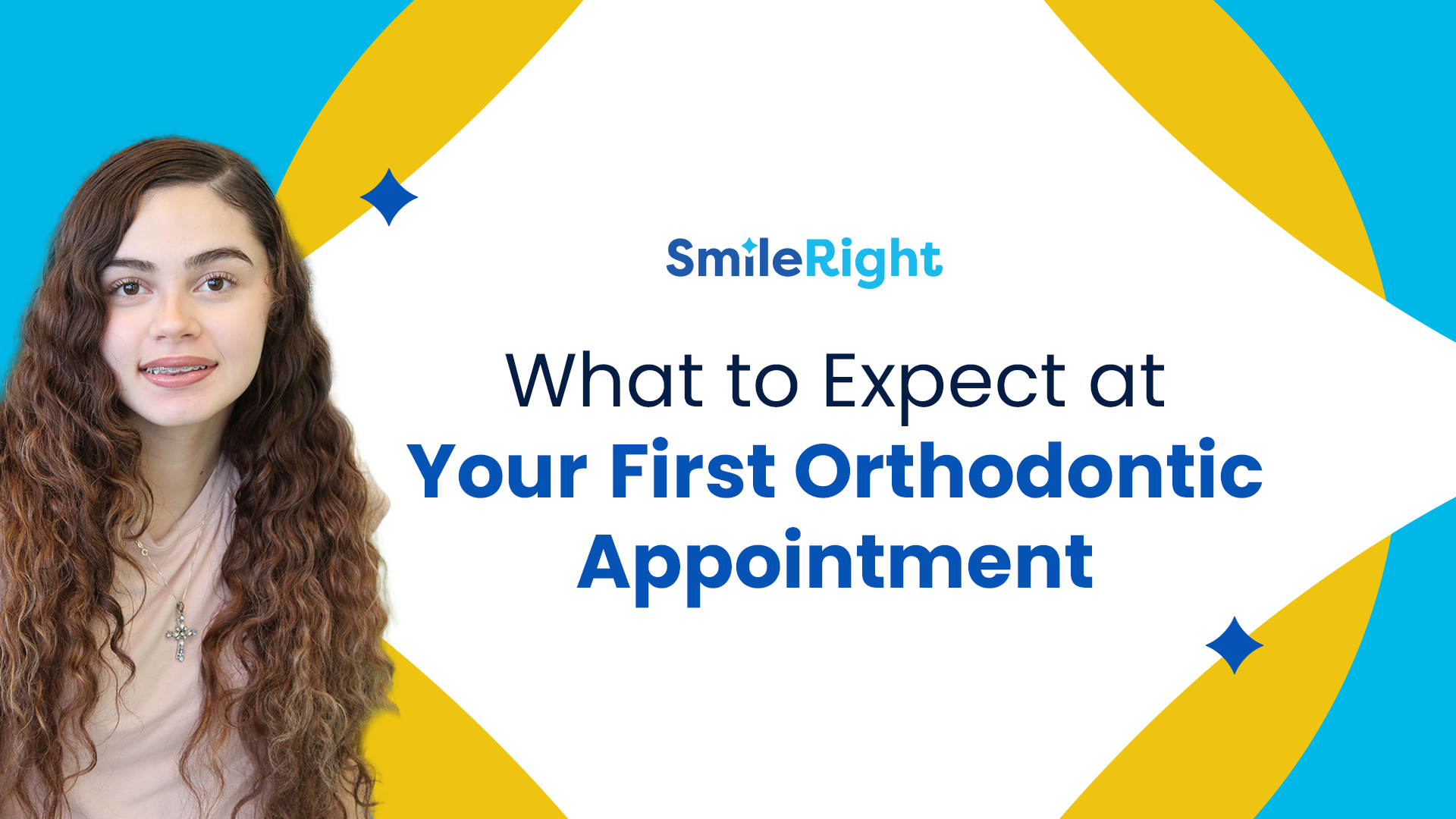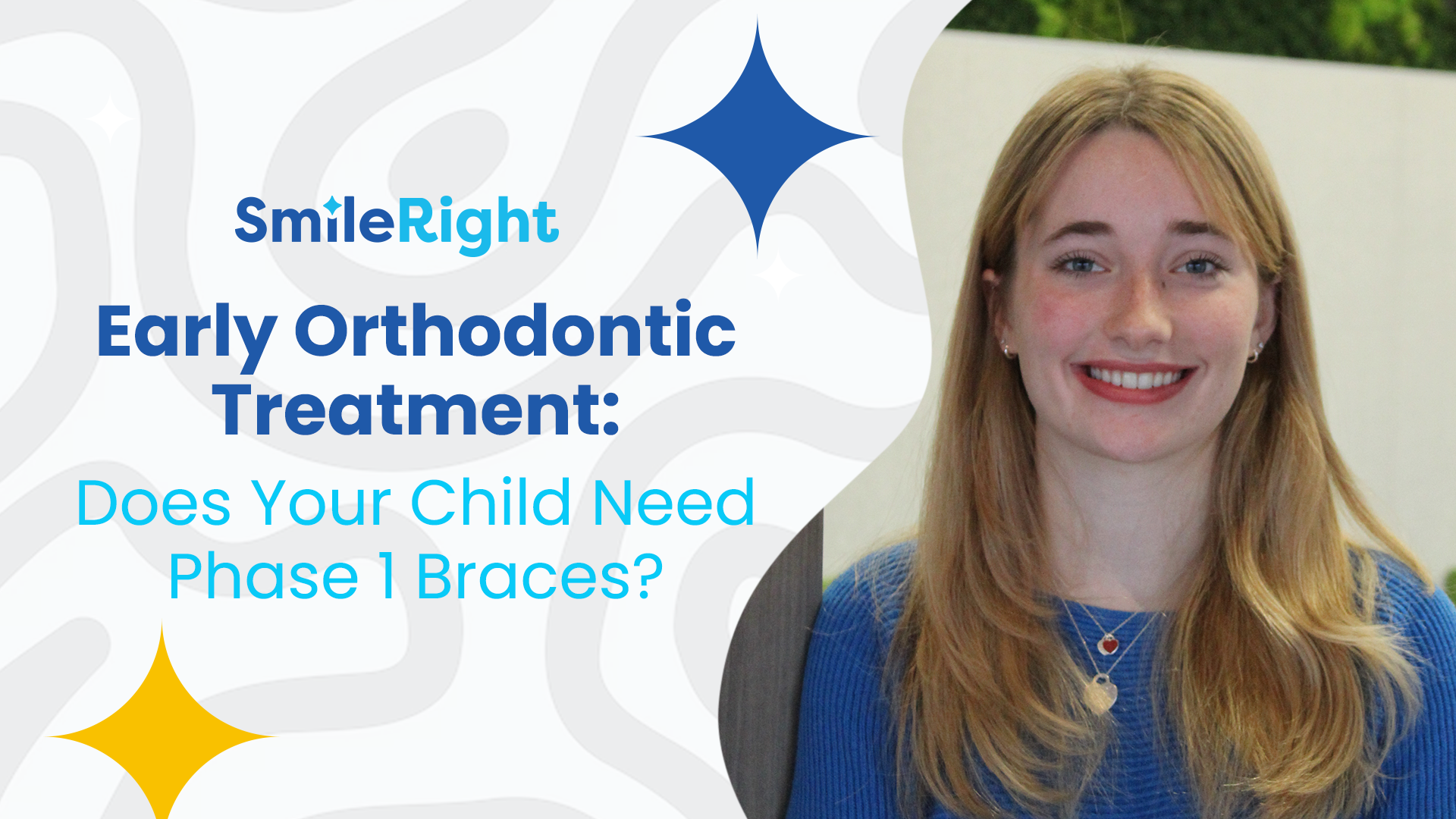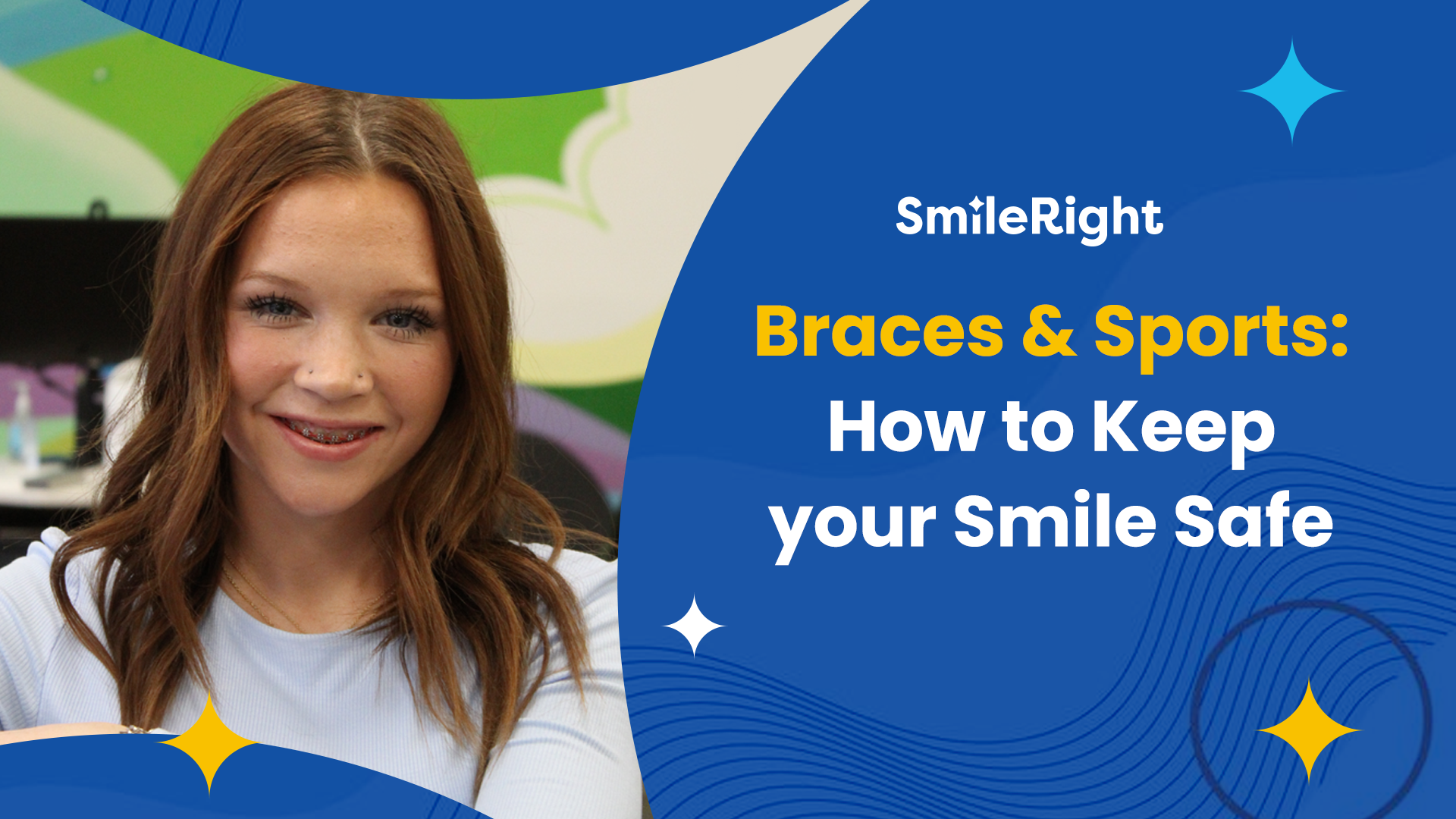Importance of Early Orthodontic Evaluation for Children

Source: Dr. Marketing
In today's rapidly changing world, emphasizing the need for early orthodontic assessments in children is important. As parents, guardians, or caregivers, safeguarding our children's oral health is fundamental to their overall well-being.
Early orthodontic evaluations play a vital role in proactively identifying and managing potential dental and jaw problems before they become more serious. Early intervention plays a pivotal role in promoting optimal oral health for our children by ensuring proper dental alignment and preventing future issues. Our orthodontic practice, SmileRight Braces in Houston can help guide and support you to make sure your child’s oral health is on track. Let's dive into the importance of proactively maintaining the health and proper alignment of your teeth.
Early Orthodontic Evaluation

Our children grow and change so quickly, right before our eyes! It's important to realize the significance of monitoring your child's dental development as it can greatly impact their overall well-being. Early orthodontic assessments for children hold importance for various reasons.
Firstly, it enables our orthodontists at SmileRight to identify and resolve potential dental and jaw development issues early on. Early detection of concerns like crowding, spacing, or misaligned bites allows for more effective and minimally invasive treatment.
Early assessment can also play a crucial role in averting the progression of orthodontic concerns. Neglected conditions may escalate into severe issues in the future, affecting basic functions like chewing, speaking, and even breathing. Additionally, early orthodontic intervention can guide the growth of the jaw and teeth, potentially reducing the need for extensive orthodontic treatment in the future. By addressing issues when a child is still growing, our orthodontists in Houston can take advantage of natural growth processes to achieve optimal results.
Let’s Talk About Orthodontic Appliances

In the field of orthodontic treatment, a wide range of dental appliances are available to tackle different dental problems, from crooked teeth to jaw misalignments. Understanding the functions of these devices is important. Our orthodontic team in Houston is ready to assist you in developing a personalized treatment strategy to tackle your orthodontic needs.
From traditional braces to contemporary clear aligners, each option provides distinct advantages and factors to consider that cater to your specific requirements. Here we will dive into the details of each, highlighting their significance in attaining both oral health and aesthetic balance.
Traditional Braces

Traditional braces serve as a reliable orthodontic solution for aligning teeth and fixing bite problems. They comprise metal brackets attached to the teeth and linked by wires and rubber bands. These metal brackets, connected by wires, work to align the teeth accurately with regular adjustments. Despite not being the most visually appealing choice, traditional braces are renowned for their durability and effectiveness in addressing complex dental issues.
This orthodontic treatment is widely chosen to correct misaligned teeth and enhance the smile's alignment. Regular visits with our orthodontists are necessary for adjustments to ensure the teeth move into the desired position.
Although wearing braces demands patience and care, the reward of a beautifully aligned smile is invaluable. Adhering to the guidance of our orthodontists is crucial for achieving optimal results and maintaining good oral hygiene throughout the treatment.
Pros of Traditional Braces
- Effective
- Durability
- Cost-Effective
- Customizable
Cons of Traditional Braces
- Visibility
- Discomfort
- Oral Hygiene Challenges
- Dietary Restrictions (hard or chewy candy, gum, popcorn, etc.)
Despite these drawbacks, metal braces remain a reliable and effective orthodontic treatment option for many patients providing exceptional results when worn consistently and cared for properly.
Ceramic Braces

Ceramic braces are a popular choice for individuals looking to straighten their teeth discreetly. Similar to traditional braces, these braces have brackets crafted from clear or tooth-colored ceramic material, making them less noticeable. They work in a similar way by gradually moving the teeth into the desired position, resulting in a beautifully aligned smile.
One of the main advantages of ceramic braces is their aesthetic appeal, as they blend in with the natural color of your teeth. This makes them a great option for those who want a more subtle orthodontic treatment. Additionally, ceramic braces are typically more comfortable than metal braces and are known to cause less irritation to the gums and cheeks.
While ceramic braces are a great choice for many individuals, it's important to follow our orthodontists instructions for care and maintenance. This includes regular check-ups and cleanings to ensure your treatment progresses smoothly. With proper care, ceramic braces can help you achieve the smile you've always dreamed of.
Pros of Ceramic Braces
- Less Noticeable
- Effective
- Durability
- Customizable
Cons of Ceramic Braces
- Cost
- Susceptible to Staining
- Fragility
- Discomfort
Despite these drawbacks, many of our patients opt for ceramic braces for their discreet appearance and effectiveness in achieving straighter teeth and improved bite alignment.
Lingual Braces

Lingual (inside towards the tongue) braces are a discreet and effective way to straighten your teeth. Unlike traditional braces that are placed on the front of your teeth, lingual braces are placed on the back of your teeth, making them virtually invisible to others. This makes them a popular choice for individuals who want to improve their smile without drawing attention to their orthodontic treatment.
One of the main advantages of lingual braces is that they provide a more aesthetic option for those who may feel self-conscious about wearing traditional braces. They are custom-made to fit the shape of your teeth, ensuring a comfortable fit and precise alignment. Additionally, lingual braces are suitable for patients of all ages and can effectively treat a wide range of dental issues, from simple to complex cases.
While lingual braces may take some time to get used to, the benefits of achieving a straighter smile often outweigh any initial discomfort. With regular adjustments and proper oral hygiene, you can expect to see significant improvements in your teeth alignment over time. So, if your child or teen is looking for a discreet and reliable way to transform their smile, lingual braces may be the perfect choice for you.
Pros of Lingual Braces
- Invisibility
- Effective
- Customized
- Comfort
Cons of Lingual Braces
- Cost
- Speech Impediment
- Difficulty with Oral Hygiene
- Treatment Duration
Despite these potential drawbacks, many individuals choose lingual braces for their discreet appearance and effective results in achieving straighter teeth and improved bite alignment.
Clear Aligners
Clear aligners have become a popular orthodontic treatment option that offers a discreet way to straighten teeth. These custom-made, transparent trays gradually shift teeth into their proper position, providing a more comfortable and aesthetically pleasing alternative to traditional braces.
One of the main advantages of clear aligners is their nearly invisible appearance, making them a preferred choice for individuals who may feel self-conscious about wearing braces. Additionally, clear aligners are removable, allowing for easier maintenance of oral hygiene compared to fixed braces.
Patients using clear aligners typically undergo a series of aligner trays that are switched out every few weeks as the teeth gradually move into alignment. These are transparent plastic trays that fit over the teeth and gradually move them into the desired position. Popular brands include Invisalign and Clear Correct. Regular check-ups with our orthodontist at SmileRight Braces in Houston are essential to monitor progress and ensure the treatment is proceeding as planned. Overall, clear aligners offer a convenient and effective way to achieve a straighter smile without the hassle of metal brackets and wires. If you are considering orthodontic treatment, clear aligners could be a great option to explore.
Pros of Clear Aligners
- Appearance
- Removability
- Comfort
- Predictable Treatment
- Convenience
Cons of Clear Aligners
- Compliance
- Speech Impediment
- Not Suitable for All Patients
- Cost
Palatal Expanders

Palatal expanders are orthodontic devices used to widen the upper jaw. They are commonly recommended by our orthodontists at SmileRight to address issues such as crowding, crossbites, and narrow dental arches. The expander works by applying gentle pressure to the upper molars, gradually pushing them outwards to create more space in the mouth.
This expansion can help improve the alignment of the teeth and create a more harmonious bite. Patients may experience some initial discomfort or difficulty speaking and eating when the expander is first placed, but these symptoms typically subside as the mouth adjusts to the device.
Regular adjustments may be required to ensure the desired expansion is achieved. Overall, palatal expanders can be an effective tool in orthodontic treatment for achieving a healthy, balanced smile.
Pros of Palatal Expanders
- Treatment of Crowding
- Correction of Crossbite
- Improved Breathing
- Prevention of Impacted Teeth
Cons of Palatal Expanders
- Discomfort
- Speech Changes
- Oral Hygiene Challenges
- Compliance
- Potential for Relapse
Despite these potential drawbacks, palatal expanders are a valuable orthodontic tool for correcting various dental and skeletal issues and can significantly improve oral function and aesthetics when used as part of a comprehensive treatment plan.
Space Maintainers
Space maintainers are dental devices used to hold space for permanent teeth to erupt properly. They are commonly recommended for children who have lost baby teeth prematurely or due to dental issues. By keeping the surrounding teeth from shifting and closing the gap, space maintainers help ensure a healthy and straight smile as the child grows.
Proper care and regular dental check-ups are essential when using space maintainers to ensure they are effective in promoting optimal dental health. If you have any concerns about your child's dental development, consult with ours dentists to see if space maintainers are a suitable option.
Pros of Space Maintainers
- Preventive Measure
- Promote Proper Tooth Development
- Preserve Oral Function
- Avoid More Invasive Treatments
Cons of Space Maintainers
- Potential Discomfort
- Oral Hygiene Challenges:
- Risk of Dislodgement
- Need for Maintenance
- Aesthetic Concerns
Overall, while space maintainers play a crucial role in preserving dental alignment and function, they require proper care and maintenance to ensure their effectiveness and prevent complications. Regular communication with our orthodontist in Houston are essential to address any concerns and ensure the best possible outcome for your child's oral health.

Overall, early orthodontic evaluation plays a crucial role in promoting oral health, preventing future complications, and ensuring the overall well-being of children as they grow and develop. The different orthodontic appliances offer a diverse array of options, each tailored to address your specific dental and skeletal issues. Ultimately, the decision regarding which orthodontic appliance to choose depends on factors such as the nature of orthodontic issues, treatment goals, personal preferences, and lifestyle considerations.
By working closely with our orthodontist at SmileRight in Houston, Texas, we can help you make informed decisions and embark on a journey towards achieving optimal oral health and a confident smile!
We are your local Orthodontist in Houston!




